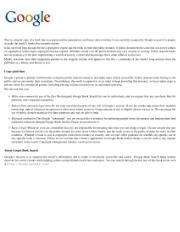Shouting fire in a crowded theater
"Shouting fire in a crowded theater" is a popular metaphor for speech or actions made for the principal purpose of creating unnecessary panic. The phrase is a paraphrasing of Oliver Wendell Holmes, Jr.'s opinion in the United States Supreme Court case Schenck v. United States in 1919, which held that the defendant's speech in opposition to the draft during World War I was not protected free speech under the First Amendment of the United States Constitution.
The paraphrasing does not generally include (but does usually imply) the word "falsely", i.e., "falsely shouting fire in a crowded theater", which was the original wording used in Holmes's opinion and highlights that speech which is dangerous and false is not protected, as opposed to speech which is dangerous but also true.
The Schenck case
Holmes, writing for a unanimous Court, ruled that it was a violation of the Espionage Act of 1917 (amended with the Sedition Act of 1918), to distribute flyers opposing the draft during World War I. Holmes argued this abridgment of free speech was permissible because it presented a "clear and present danger" to the government's recruitment efforts for the war. Holmes wrote:
The most stringent protection of free speech would not protect a man falsely shouting fire in a theater and causing a panic. [...] The question in every case is whether the words used are used in such circumstances and are of such a nature as to create a clear and present danger that they will bring about the substantive evils that Congress has a right to prevent.
The First Amendment holding in Schenck was later overturned by Brandenburg v. Ohio in 1969, which limited the scope of banned speech to that which would be directed to and likely to incite imminent lawless action (e.g. a riot). The test in Brandenburg is the current High Court jurisprudence on the ability of government to proscribe speech after that fact. Despite Schenck being limited, the phrase "shouting fire in a crowded theater" has since come to be known as synonymous with an action that the speaker believes goes beyond the rights guaranteed by free speech, reckless or malicious speech, or an action whose outcomes are obvious.
Literal examples
People have indeed falsely shouted "Fire!" in crowded public venues and caused panics on numerous occasions, such as at the Royal Surrey Gardens Music Hall of London in 1856, in Harlem in 1884,[1] and in the Italian Hall disaster of 1913, which left 73 dead. In the Shiloh Baptist Church disaster of 1902, over 100 people died when "fight" was misheard as "fire" in a crowded church causing a panic and stampede.
Criticism

Finan writes that Justice Holmes began to doubt his decision due to criticism received from Free Speech activists. He also met the legal scholar Zechariah Chafee and discussed his work "Freedom of Speech in War Times".[2][3] According to Finan, Holmes' change of heart influenced his decision to join the minority and dissent in the Abrams v. United States case. Abrams was deported for issuing flyers saying the US should not intervene in the Russian Revolution. Holmes and Brandeis said that 'a silly leaflet by an unknown man' should not be considered illegal.[2][4] Chafee argued in Free Speech in the United States that a better analogy in Schenk might be a man who stands in a theatre and warns the audience that there are not enough fire exits.[5][6]
In his introductory remarks to a 2006 debate in defense of free speech, writer Christopher Hitchens parodied the Holmes judgement by opening "FIRE! Fire, fire... fire. Now you've heard it," before condemning the famous analogy as "the fatuous verdict of the greatly over-praised Justice Oliver Wendell Holmes." Hitchens argued that the imprisoned socialists "were the ones shouting fire when there really was a fire in a very crowded theatre indeed... [W]ho’s going to decide?"[7][8]
See also
- Bomb threat
- False alarm
- Hate speech
- Shiloh Baptist Church disaster, 1902
- Italian Hall disaster, 1913
- The Boy Who Cried Wolf
References
- ↑ "A Cry of Fire in a Crowded Theater." (PDF). The New York Times. September 25, 1884. p. 4.
- 1 2 Christopher M. Finan (2007). From the Palmer Raids to the Patriot Act: a history of the fight for free speech in America. Beacon Press. pp. 27–37. ISBN 978-0-8070-4428-5. Retrieved March 25, 2011.
- ↑ Chafee, Zechariah (1919). "Freedom of Speech in Wartime". Harvard Law Review. 32 (8): 932–973. doi:10.2307/1327107.
- ↑ William E. Leuchtenburg, The Perils of Prosperity, 1914-32 (Chicago: University of Chicago Press, 1958), 43
- ↑ Chafee, Zechariah (1067). Free Speech in the United States. Harvard University Press. p. 15.
- ↑ Zinn, Howard (August 2, 2005). A People's History of the United States. HarperCollins. p. 366. ISBN 0060838655. Retrieved June 20, 2012.
- ↑ Hitchens, Christopher. Christopher Hitchens -- Free Speech Part 1. YouTube. Event occurs at 00:00:00. Retrieved June 20, 2012.
- ↑ Hitchens, Christopher (November 15, 2006). "Fire in a Crowded Theatre" (PDF). Retrieved June 20, 2012.
Further reading
- Cohen, Carl (1989). "Free speech and political extremism: How nasty are we free to be?" (PDF). Law and Philosophy. 7:3 (1989): 263–279. doi:10.1007/BF00152513.
